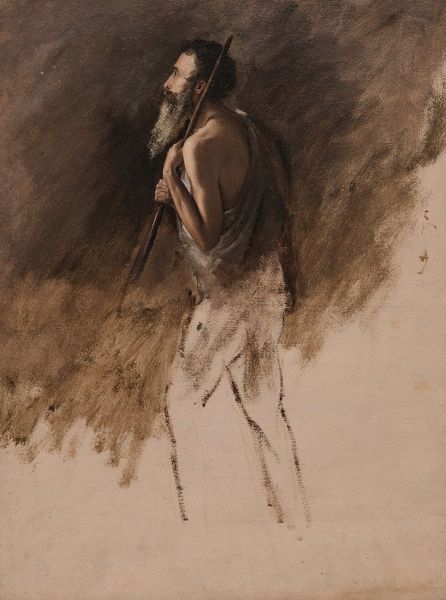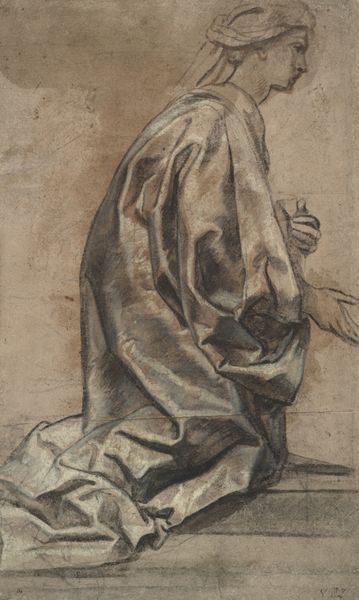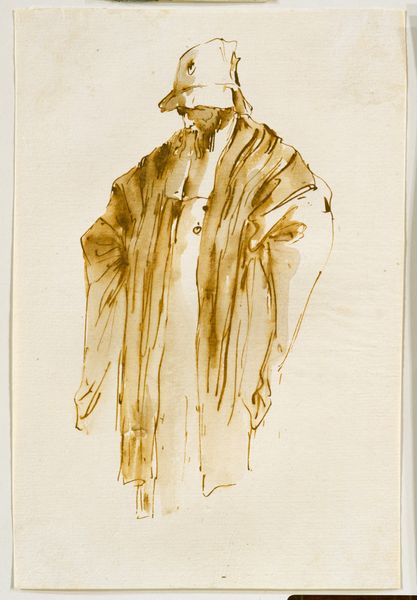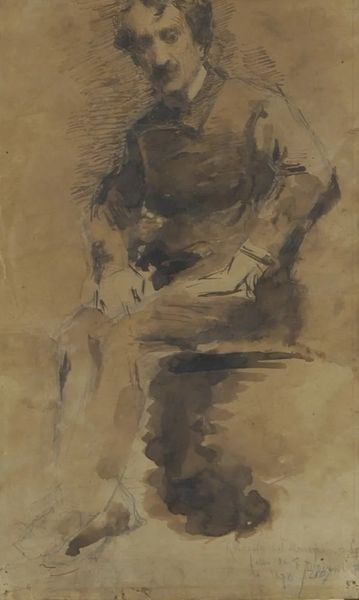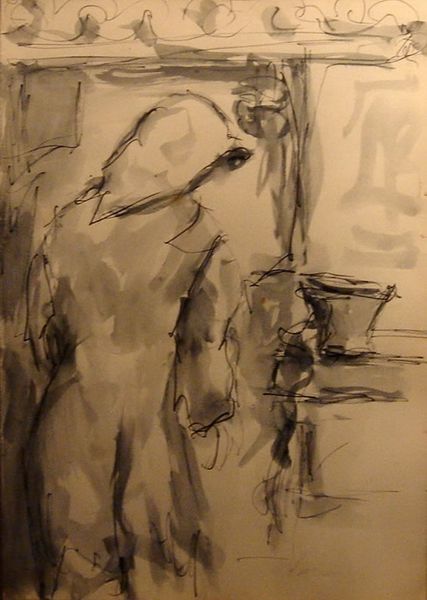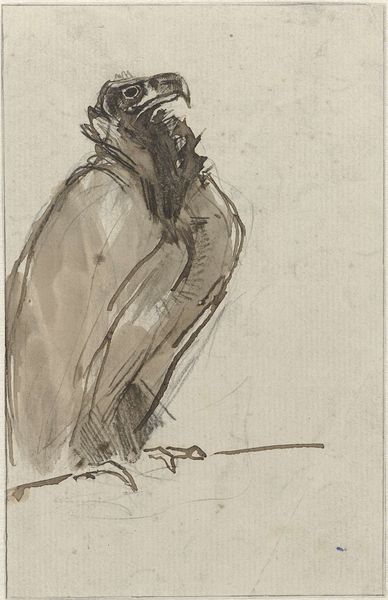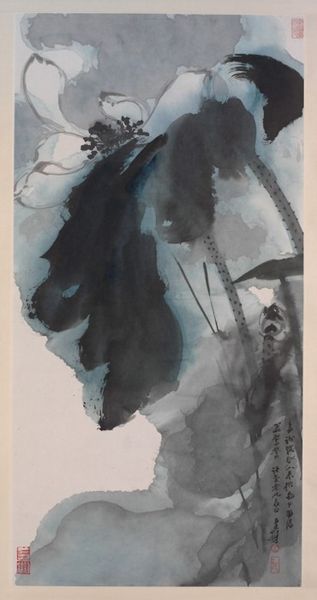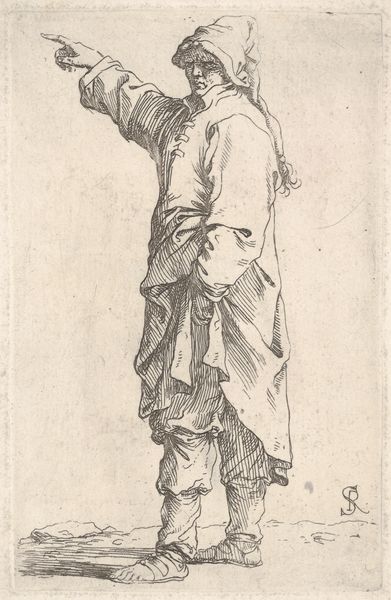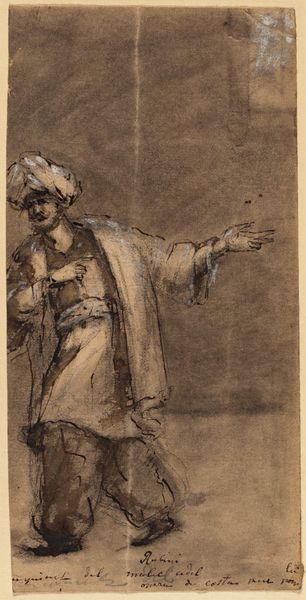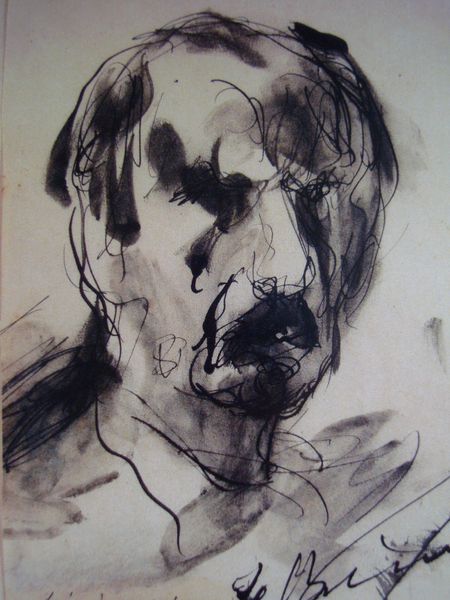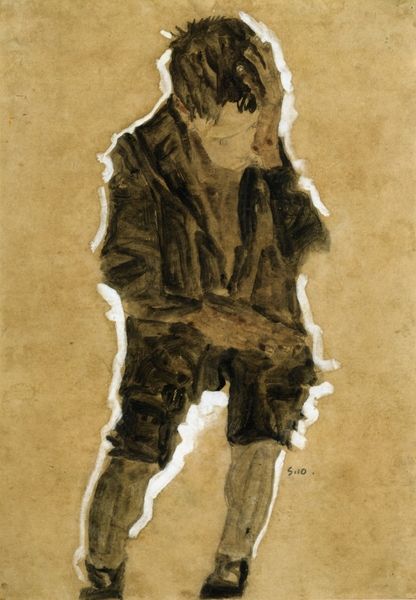
drawing, charcoal, pastel
#
portrait
#
drawing
#
self-portrait
#
impressionism
#
charcoal drawing
#
charcoal art
#
charcoal
#
pastel
#
charcoal
Copyright: Public domain
Curator: Looking at Toulouse-Lautrec’s work entitled “Clown” completed around 1886 using charcoal and pastel, one immediately confronts a study in tonal contrast, wouldn’t you agree? Editor: Indeed, the stark use of charcoal lends the piece an unfinished quality. It's as if the artist captured a fleeting moment of performance or perhaps a quiet moment of contemplation off stage. What do you make of its almost monochromatic palette? Curator: Well, restricting the color range certainly focuses the viewer's attention on the form and texture. Consider the strong diagonal of the arm, balanced by the shadowy, almost amorphous mass of the costume behind him. There's a definite visual tension. This allows us to analyze the line of the body which serves to create space as well. Editor: That diagonal is critical; it directs our gaze upward. I see the clown as symptomatic of societal fascination with theatrical characters at the time and how these public roles reflect something deeper about us all, but also, how the body can become another medium. It certainly draws on broader circus culture which grew at that time and continues to inform popular entertainment. Curator: Precisely, and within this carefully crafted composition, the subject appears simultaneously exposed and enigmatic. Note also how the use of line—the hatching and cross-hatching specifically—creates a complex sense of depth. In contrast to his face the shadow almost subsumes the shape, or body, and could be interpreted in so many ways because of the formal quality to this work. Editor: Yes, and within Parisian society, the spectacle became another forum through which to grapple with cultural identities, class anxieties, and evolving social norms, too, but this also could express something more in-tune to something in the psychology of everyday society, with the concept of performativity being front and center to it. Curator: Thank you, that's wonderfully observed. Thinking about it, looking at "Clown," its enduring appeal, I suspect, resides in this unique combination of meticulous design and palpable human presence which comes down to that formal quality. Editor: It is a captivating work and as revealing of Toulouse-Lautrec's talent as a draughtsman, as it is reflective of fin-de-siecle cultural identity at that time.
Comments
No comments
Be the first to comment and join the conversation on the ultimate creative platform.
